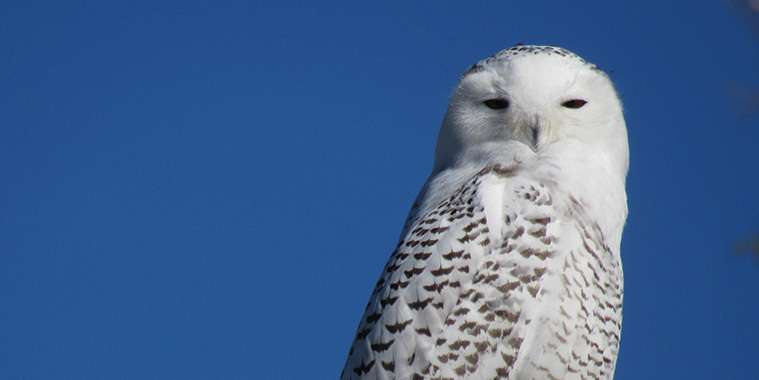By Dorothy Dobbie
There are many owls in the wilderness, about 400 species in Manitoba alone. They avoid humans but are easier to see in winter when there are no leaves to hide them. They frequently visit the city, where we might encounter the eerie sound of the screech owl, or hear the more familiar hoo-hoo-hoo call of Manitoba’s official bird, the great gray owl.
They don’t all say hoo-hoo-hoo. Some warble, some screech, some moan, some tweet. There are many, many calls, and each species has an extensive vocabulary to suit the circumstances.
The great gray owl is the longest in length of all the owls, measuring as much as 33 inches, although much of its length and bulk is feathers. It lives 13 to 27 years. Not all owls are big. Two very small owls inhabit our northland. The northern pygmy owl is just seven to eight inches long and weighs only 2.5 ounces, with a wingspan of only 12 inches. The northern saw-whet owl, often seen in Winnipeg, is also very small with a wingspan of 17 inches and a weight of just 2.8 ounces. It can live up to 17 years.
My favourite owl is the snowy owl which could also be called the “showy” owl with the male’s all white feathers and the female’s black bars. It can sound like it is chuckling with an eh-eh-eh sound plus some rough shouting and grunting — quite a language. I like its pretty, furry, round face. A large owl, with a wingspan of over 52 inches, it weighs about four to five pounds (the female is heavier) and is the heaviest owl in Canada. It nests in a hollowed out depression lined with feathers in the ground. In the high Arctic, it feeds on lemmings and or even the odd hare, but it comes down south to winter in the wide open spaces of the prairies where there are plenty of rabbits.
Some owls, such as the long-eared (and long-lived) owl, live up to 27 years. The snowy owl has a life span in the wild of only about 14 years, but it can cover a lot of ground in that time, being able to fly about 50 miles per hour. Its average speed, however, is more like 12 to 15 miles per hour. Most owls hunt mainly at night, but snowy owls hunt by both night and day. Snowy owls are covered in feathers from the tips of their beaks to the tips of their feet.
The first bird out of the shell of any owl nest is the heir to everything in difficult times. The first born gets the first food — all the food if it’s a bad year. It might even get to eat its siblings, when things are really tough. Snowy owls adjust their egg clutches to meet the conditions and in a hard year, the number of eggs in their nests will shrink from 10 to 12 down to three to seven. Great gray owls lay only one to two eggs a year.
Owls do not build nests, although some, such as the snowy owl, lay their eggs in a hollow. Instead, most look for a nest abandoned by some other bird, fitting the size of the nest to the size of the squatter owl. You may be able to attract an owl by providing suitable accommodation.
While most owls feed on rodents, the hoot owl (also called the barred owl), the one that most often goes hoo-hoo-hoo, is said to be able to wade in water to find fish. An owl swallows its food whole, regurgitating bones and fur and other indigestibles in pellets.
Owls also have very interesting feet, with two toes facing forward and two facing backward, which give it a lot of dexterity in catching prey.
Owls can hear mice from 60 feet away and it is said that the barn owl has a hearing range of 150 feet. In some cases, the ears, set behind the eyes in the side of the head, are placed asymmetrically. If sound enters the right ear, the owl can detect where it’s coming from by the length of time it takes to get to the other ear.
Owls have very acute eyesight, but they are long-sighted, finding it harder to see up close. They make up for this with binocular vision, so they can see in three dimensions, and they can see some colour. Eyes are very large; some as heavy as our own. An owl can turn its head 270 degrees, that is three-quarters of the way around, so it can see side-to-side, forwards and even backwards. It has three sets of eyelids: one to clean the eye, one to sleep with and one to blink with.
Manitoba is not the only province to claim an owl as its provincial bird: Alberta has the great horned owl. Quebec claims the snowy owl.
Dorothy Dobbie is the publisher of Manitoba Gardener Magazine. Subscriptions, both digital and print, can be obtained at localgardener.net



